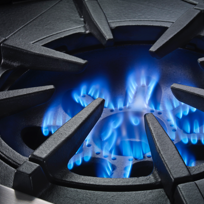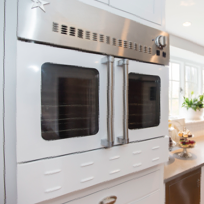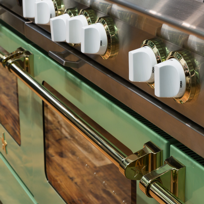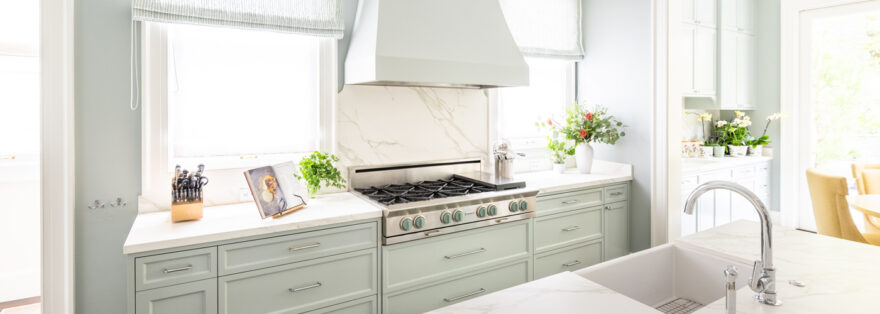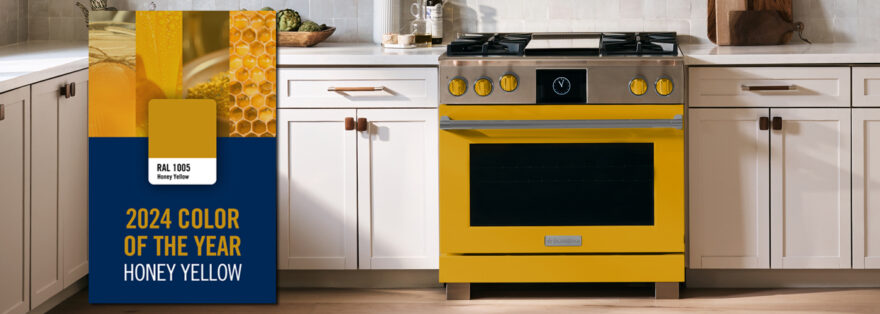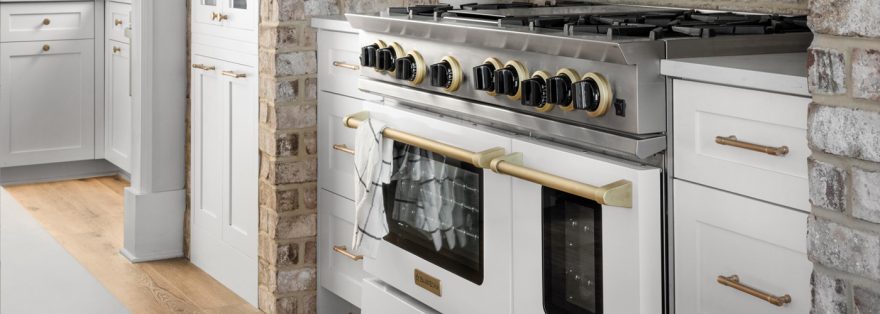The right hood does more than just provide good air flow, so we asked appliance and ventilation experts share their advice for selecting a style that looks well and looks great, too.
A well-designed stove hood can do more than provide proper ventilation for your cook space—it can elevate the ambience of your kitchen, too. “This is an appliance tasked with extracting lingering odors, steam, and smoke from cooking,” Jessica Petrino, an educator and appliance expert at AJ Madison, explains. “And while a stove hood is required for ventilation, considering the range of styles available today, it is also an important design choice in the kitchen.”
With all of the high-quality options on the market, selecting the right one for your kitchen can be tricky. “From a design perspective, there are four different types of ventilation types: wall hoods, island hoods, liners, and downdrafts,” notes Matthew Schutte, a project manager in ventilation at BlueStar. “Wall hoods are the most common application for kitchens, and are directly affixed to the wall and may have a decorative chimney, or soffit, to line up with the top of your cabinets or to ‘disappear’ into your ceiling.” In the market for a new stove hood, but not exactly sure what to look for? We asked Petrino and Schutte to share their advice—and this is what they had to say.
Capture Area
The amount of coverage a stove hood has over a cooking area is referred to as its capture area—which, says Schutte, is an essential factor when selecting a model. “Range hoods should be at least the width of your cooking surface and up to six-inches wider to maximize the capture area,” he explains. “This allows the hood to properly manage the smoke and steam.” Additionally, Schutte says the ventilation system should be at least 24-inches deep to cover all of the top burners below. “An optimal capture area (proper width and depth) aids in an effective ventilation system,” he notes.
Hood Power
A stove hood’s power is measured by how many cubic feet of air it moves per minute (CFM) and Schutte says that it is critical that you pick one with a fan or blower that meets or exceeds your cooktop’s requirements. “The proper blower will have enough CFMs of power to adequately work with the British thermal unit (BTU) output of your cooking appliance,” he explains. If you have a gas-powered stove top, Petrino says to divide it’s BTU by 100 to determine the necessary amount of CFMs for the stove hood. “CFM requirements are more lenient for electric cooking,” she explains.
Motor Placement
No one wants a stove hood with a fan or blower that makes a lot of noise, which is why Schutte says it’s important to take the placement of a blower motor into account. “The location of the blower motor can significantly impact the sound it produces,” he explains. “The farther a blower motor is away from the hood itself, the quieter the system will be. Remote or in-line blowers are generally the quietest options.”
Mounting Height
To ensure that this appliance operates at maximum efficiency, Petrino says it’s crucial to install your hood at the correct height. “Install it too high, and the suction won’t work effectively; install it too low, and you won’t have enough space to cook underneath,” she explains. “Most range hood brands recommend between 24 to 36 inches of clearance between the stove and the range hood, so make sure you have the correct measurements in hand when selecting a hood.”
Ducting
If your kitchen has tall ceilings, Petrino says you might need a duct cover extension accessory to elongate your hood. “It’s most beneficial to keep ductwork as short and as straight as possible,” she advises. “Use smooth metal ductwork and maintain the same duct size throughout the entire run, since reducing this can slow down airflow and make the hood sound noisy.” When exhausting air to the outside of the home is impossible or impacted, Petrino says that duct-free or recirculating hoods can bring filtered air back into the kitchen. “However, recirculating hoods require regular filter changes to maximize performance,” she says.




